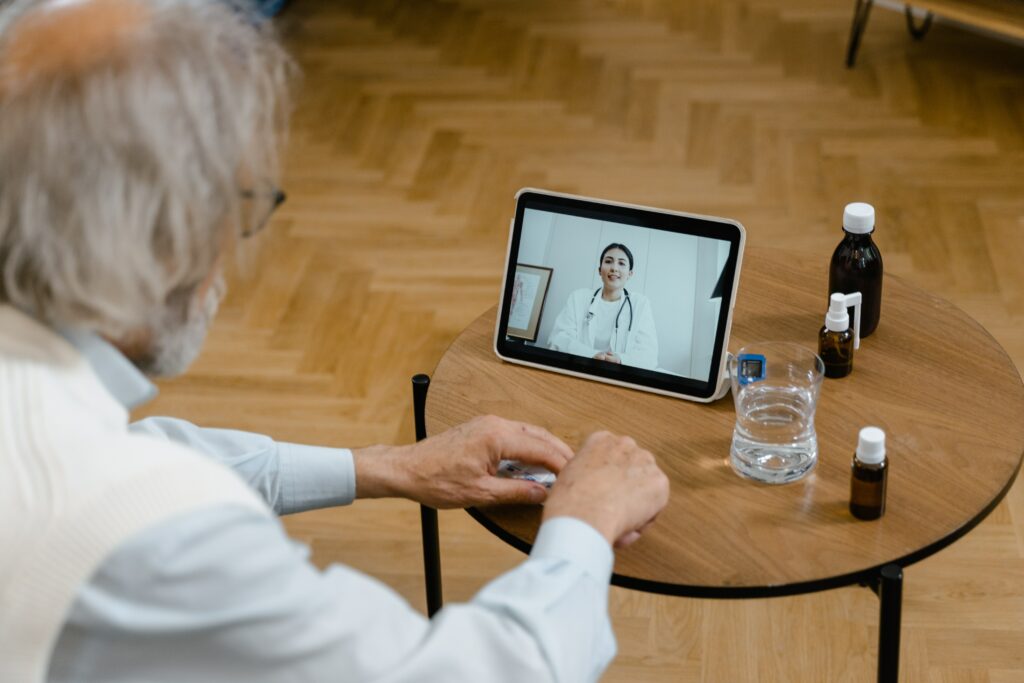01.06.22
Part 2: STREAMLINED TELEHEALTH EMERGES FROM PANDEMIC EXPERIENCE,
Tammy Allen, Director | Marketing & Programs, The NIIC
Five Streamlined Options

The recent pandemic expedited the need for patients, providers, and caregivers to access virtual care quickly, easily, and safely. This past year, a 200% uptick in virtual visits indicated patients and providers alike opted for virtual connection to minimize potential infection exposure. In Part 1 of this 2 Blog Series, we covered Three Basic Challenges to Virtual Healthcare.
In a webinar collaborating with The NIIC Connected Health Lab, Woods explored five ways virtual visits can streamline the healthcare industry.
OPTION #1: Remote Patient Monitoring (RPM) is largely in development right now. “Think of it as a virtual care center where a patient would walk into an emergency room with providers on staff,” said Woods.
With RPM, patients would be able to click on a link, join a meeting room and say, “I need to be seen for this problem.” They would then be put into a virtual waiting room, where the providers would come and visit them as they’re available. This scenario is similar to a traditional emergency waiting room. This option would include vital sign monitoring and alarms.
Wearable health devices could come into play to take this a step further. “If users have devices connected to Apple Health Kit, such as through a watch,” said Woods, “data such as steps and heart rate can be synced into the profile during the visit inside the virtual room. The provider would have access to that information. We are also looking into the capability of uploading transcripts of the call into the patient’s EHR through a secure link.”
OPTION #2: Collaboration is another primary benefit of developing telehealth technology. It opens communication among clinical care team members with family members, patients, interpretation services, and administrators. “They’re all able to meet through scheduled tele-visits,” said Woods.
This kind of collaboration can extend into staff training and support groups (e.g., addiction and recovery or grief and loss).
Telehealth also offers excellent solutions for clinician consultations during post-care check-ins with patients at home.
Benefits even include emergency medical services. “We are providing capabilities for ambulance drivers or EMS personnel to be able to communicate with the hospital,” said Woods. For example, not only could EMTs alert the hospital that they are coming in, but they could also give real-time status updates and even provide images from a mobile device.
OPTION #3: Web Real-Time Communication (WebRTC) provides patient comfort and ease of use. Patients can interact with providers through a browser instead of an app. Through the patient landing experience, the patient can check in as a patient and describe symptoms and chief complaints. “We wanted to present a patient landing experience that is very similar to a physical waiting room,” said Woods.
The patient landing experience also gives providers the ability to create a branded experience, whether that’s through colors, logos, or wording. Providers also have the capability to upload articles or videos for patients while the provider is getting ready to see them.
OPTION #4: Guided messaging and clear instructions help patients navigate to confirm they’re in the right place at the right time to be seen by the right physician or third-party integrations.
Along with this is incorporating translation services into telehealth. More than 200 languages in different interpretation services are provided to meet most patient needs. “Let’s say you have a patient that you’ve met with several times, and their preferred language is Spanish. You could easily invite an interpreter pre-call. You can also bring in an interpreter mid-call for a newer patient,” said Woods.
OPTION #5 Visual Representation is an option for communicating via American Sign Language (ASL). “We want to be a very video-first organization, and we want to bring that to the medical environment,” said Woods.
Telehealth is here to stay. It creates unique opportunities for expanded, streamlined patient care. It is a valuable tool for the healthcare industry, from interpretation services and post-op appointments from home to patient-specific education and provider education.

